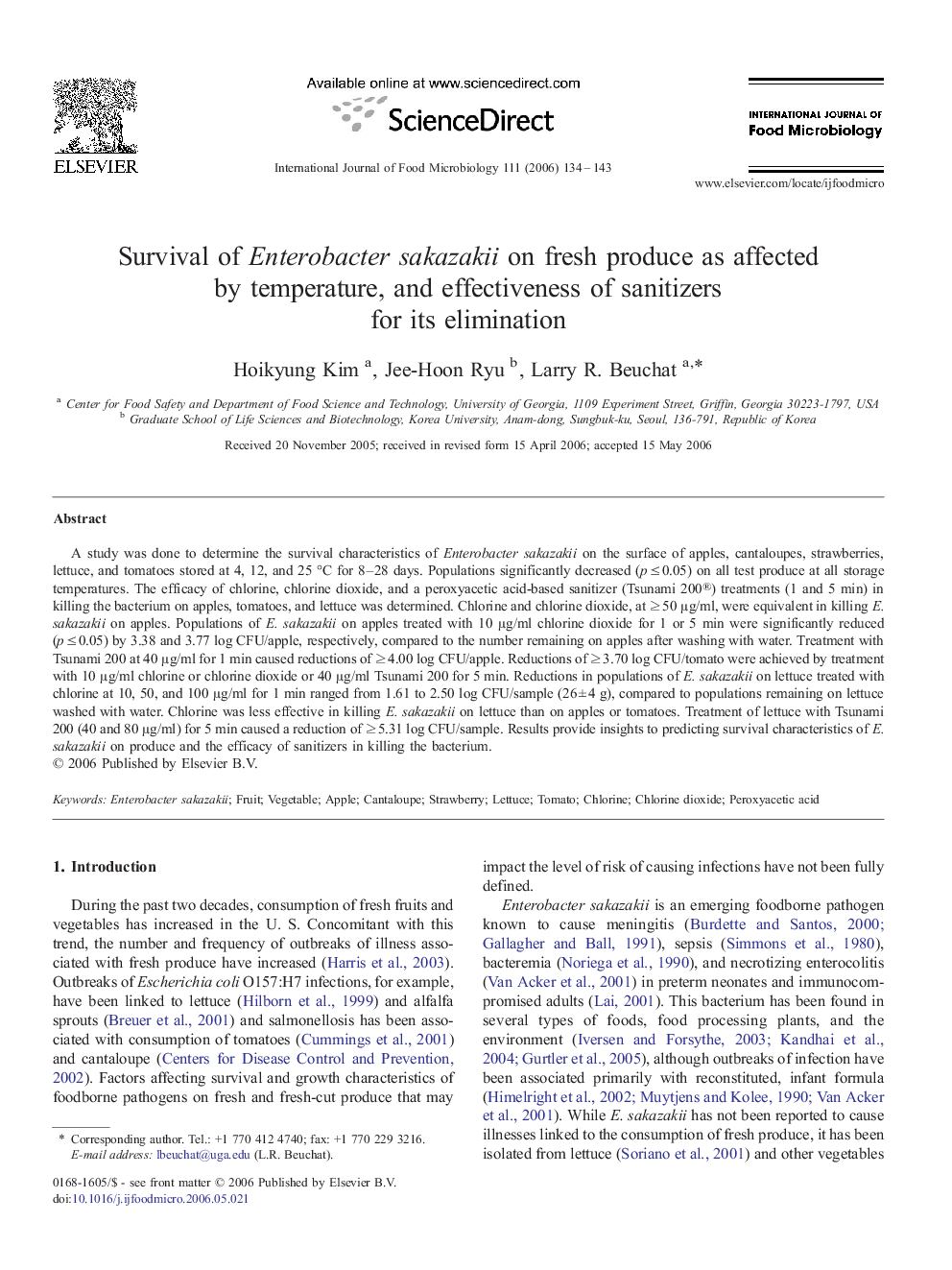| Article ID | Journal | Published Year | Pages | File Type |
|---|---|---|---|---|
| 4369952 | International Journal of Food Microbiology | 2006 | 10 Pages |
Abstract
A study was done to determine the survival characteristics of Enterobacter sakazakii on the surface of apples, cantaloupes, strawberries, lettuce, and tomatoes stored at 4, 12, and 25 °C for 8-28 days. Populations significantly decreased (p â¤Â 0.05) on all test produce at all storage temperatures. The efficacy of chlorine, chlorine dioxide, and a peroxyacetic acid-based sanitizer (Tsunami 200®) treatments (1 and 5 min) in killing the bacterium on apples, tomatoes, and lettuce was determined. Chlorine and chlorine dioxide, at â¥Â 50 μg/ml, were equivalent in killing E. sakazakii on apples. Populations of E. sakazakii on apples treated with 10 μg/ml chlorine dioxide for 1 or 5 min were significantly reduced (p â¤Â 0.05) by 3.38 and 3.77 log CFU/apple, respectively, compared to the number remaining on apples after washing with water. Treatment with Tsunami 200 at 40 μg/ml for 1 min caused reductions of â¥Â 4.00 log CFU/apple. Reductions of â¥Â 3.70 log CFU/tomato were achieved by treatment with 10 μg/ml chlorine or chlorine dioxide or 40 μg/ml Tsunami 200 for 5 min. Reductions in populations of E. sakazakii on lettuce treated with chlorine at 10, 50, and 100 μg/ml for 1 min ranged from 1.61 to 2.50 log CFU/sample (26 ± 4 g), compared to populations remaining on lettuce washed with water. Chlorine was less effective in killing E. sakazakii on lettuce than on apples or tomatoes. Treatment of lettuce with Tsunami 200 (40 and 80 μg/ml) for 5 min caused a reduction of â¥Â 5.31 log CFU/sample. Results provide insights to predicting survival characteristics of E. sakazakii on produce and the efficacy of sanitizers in killing the bacterium.
Keywords
Related Topics
Life Sciences
Agricultural and Biological Sciences
Food Science
Authors
Hoikyung Kim, Jee-Hoon Ryu, Larry R. Beuchat,
